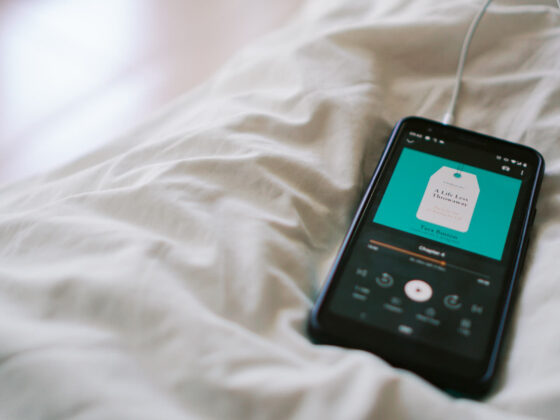Anxiety, overthinking, agitation and worry. Feelings that many of us are all too familiar with.
It’s no surprise with the highly stressed environment that we have found ourselves living in.
Everything is available at the click of a button. This fast paced life has an affect on our minds. Speeding up our thoughts. Affecting our focus.
Directly impacting our immune systems whilst immersed in the current Corona chaos. There is no time like the present to learn to address the stress.
The Current Climate
As many of us sit in quarantine, it’s difficult to ignore the fact that Corona has brought with it the fear of the unknown. It has limited our freedom and spread worry across the globe.
It has also blessed many of us with time. Time to slow down. Time to reconsider what is truly important to us. Time to rest, reset and re-align with our priorities.
This time is precious.
This unprecedented pandemic is forcing us to build resilience.
As human beings we are adaptable. We are here to help you to adapt. To help you to remain calm amidst the chaos.

Stress
“It can be argued that stress is the number one killer in the Western world today”
Dr Timothy McCall
Stress stokes the fire of the biggest health problems of our time: diabetes, depression, osteoporosis, heart attacks, strokes and autoimmune diseases.
The “S” word is unavoidable in our current culture of constant change. In our new reality of laptops, smartphones, tablets and TVs.
What exactly is “stress”?
It’s the body’s reaction that requires an adjustment or response. This reaction can be physical, mental or emotional.
What happens to the body when it’s under stress?
The Sympathetic Nervous System – Fight or Flight response
When under stress, the body triggers the Sympathetic Nervous System (SNS). The Fight or Flight response.
The brain recognises that there is a threat and signals the pituitary gland to release stress hormones to speed up the heart and respiration rates.
Why is this a bad thing?
It isn’t, not always. Not in moderation.
Some stress is actually required to keep us strong and healthy. To help us to adapt, to develop and grow.
Too little stress applied, leads our body to a state of atrophy. But if we apply too much stress, the tissues degenerate. It is crucial that we find a healthy balance between stress and rest.
So how does it affect the immune system?
Stimulating the SNS diverts blood from our digestive organs to our muscle. It shuts down the immune system, preparing us to fight or run from the external threat.
But why would our bodies be designed in such a way?
Back in the day, such external threats would be life threatening. That of a sabre tooth tiger, say, chasing after our ancestor for his next meal. So relatively speaking, in that moment, the immune system would be less vital to the body’s survival.
And today?
Our bodies react in the same way to threatening signals from the environment. Today our immune systems are inhibited by perceived threats.
There may be few sabre tooth tigers out there in modern times. We are now triggered by how we are viewing our life, not by ACTUAL external threats.
Like what?
The Power of Thought
Our thoughts. The pictures we are playing in our minds, the stories we are telling ourselves, they trigger our SNS.
Hypothetical scenarios we envision and memories we replay. They manifest in our physical bodies.
Simply listening to loud music, scrolling through our newsfeed, complaining with friends. They all activate the SNS and exacerbate stress.
Where our ancestors might have encountered a stressful situation once a week. Thanks to modern day technology, we are faced with stressful situations constantly.
We are in a constant state of Fight or Flight.
So what can we do about it?
This is where the activation of the Parasympathetic Nervous System (PNS) is imperative.
The Parasympathetic Nervous System – Rest and Digest
When triggered the nerves stimulate our internal organs, releasing acetylcholine, they slow the heart rate and blood pressure.
Blood flow then returns to the intestines and reproductive organs. Reigniting our immune system. Allowing us to rebuild and recover our health.
So how exactly do we engage this response?
Key activities to switch off Fight and Flight, and switch on Rest and Digest, are breathing and thinking.
But you just said thinking can stress us out?
Not just any old thinking. Thinking CALM thoughts.
How exactly do we think “calm” thoughts?
It’s an ongoing practice but here are some techniques to help us on the path…
Watch your Thoughts
Thoughts: Pictures. Memories. Dreams.
All flashing through the mind. Feeding off of our energy. Diverting our focus.
They can be helpful…
Memories rekindled to help dream up potential scenarios that we should avoid or engage in, based on past experience and the emotional response that the activity triggered. Helping us to navigate our way through the complex web of life.
They can also be a huge hindrance – when they come from a place of fear.
What do you mean by fear?
FEAR = False. Evidence. Appearing. Real.
Have you ever found yourself ruminating about a past that you cannot control? Or worrying about an imaginary future that has not even happened?
We may be stuck in that time we felt so alone and helpless. Or fretting over what he or she might think about us if we do this or that.
Caught up in countless questions and hypothetical scenarios…
What if we make the wrong decision? What if we lose our job? What if we get ill?
We can get so distracted by our thoughts that we lose our focus on what’s right in front of us.
If we become so caught up in such negative thought patterns and behaviours, doctors may actually stamp us with a medical condition.
Being stuck in the past – Depression.
Getting caught up in the future – Anxiety.
So what can we do about it?
We can work to switch our mindset, our internal dialogue. We can try to catch our thoughts. Reframe or challenge them.
Just like that?
Consciousness is key. Once aware that we are not ruled by these thoughts, we can gain more control of them. Reshape them.
Exercise:
If you’re new to this, you might find it helpful to keep a notebook or a note on your phone. Track your thoughts. Note down the positive and negative ones.
For every negative thought, try to find 3 ways to flip that on its head:
- It might be 3 things to be optimistic about.
- It might be 3 reasons to be grateful.
- It might be 3 logic holes you can pick in your reasoning.
- (If you struggle with this, pretend you’re talking to your best friend. What would you say to them? I guarantee you’d be kinder to them than you would to yourself!)
Meditate
Meditation is a good start.
The practice of meditation helps us to disengage with our thoughts. Observe them. Notice them. Challenge them. It allows us to respond to life’s daily dramas rather than react.

“Sitting in silence” you may say … “I haven’t got time for that.”
Many people have difficulty sitting still. That’s largely due to the current climate we have found ourselves living in. Highly charged. Always doing something productive.
It’s natural to feel the aversion to it. Many people struggle with their thoughts and shy away from facing them. This usually means it’s even more important to sit with them.
As the old zen saying goes:
“You should sit in meditation for 20 minutes per day, unless you’re too busy. Then you should sit for an hour”
OK. So 20 minutes might be slightly optimistic to begin with if you’re new to meditation . Why not try for 5 minutes? To just sit.
Make yourself comfortable, close your eyes and observe. What’s the worst that could happen?
You might even end up enjoying it. Find yourself upping it. Trying 10 minutes, 15, 20. You might even find more time!
If you’re looking to get started with meditation, there are some great apps there that will help you. My personal favourites are Calm, Headspace and Buddhify.
Breathe
If finding it too easy to get caught up in the countless thought trails triggered by the mind. It’s good to have something else to focus on, to calm and slow the thought process down.
This is where the breath comes in.
It may sound cliche, too easy even…
“Just breathe.” “Pause, take a breath…. Everything will be just fine.”
Truth is, conscious breath really is a magical key to calming the mind.
How do I breathe consciously?
With your full focus and undue attention, and maybe a little sprinkle of visualisation (only if you’re feeling it).
Try this out:
- Close your eyes (after reading through stages 1-6 first, obvs!)
- Take a deep breath in through your nose. Count to 1,2,3,4. ( Option – Follow the breath all the way down to your pubic bone. Feel your tummy expand like a balloon. Creating space in the ribcage… back of the ribcage, sides of the ribcage, front of the ribcage. Chest lifts. Filling with air.)
- Now hold the breath there for 1,2,3,4.
- Now slowly exhale, through the nose for the same count… 1,2,3,4. (Option – Pull the tummy back towards the spine. Feel the rib cage compress… back, sides, front. Finally the chest sinks.)
- Now hold the breath outside for 4,3,2,1.
- Repeat steps 2-5 as many times as desired.
This simple ‘box breathing’ exercise is always there for you when you start to notice that you are getting carried away with your thoughts.
As you practice, over time, you will notice that you can extend the breaths and hold times.
In this current climate it is evident that we cannot control what is happening around us. So why not focus on the one thing that we can control. The breath.
The breath is what links us to the present moment. It’s the most valuable and easily accessible tool in combating stress. Why not use it?
Conclusion
So there we have it….
3 simple techniques to help combat stress and find a sense of calm in the chaos.
- Watch your thoughts
- Meditate
- Breathe
It’s as easy as that! Easy as 1,2,3.
Easier said than done, maybe. We hear you, stilling the mind may sound like a difficult task when you think about it.
Controlling the mind by using the mind is extremely difficult. Observing the thoughts may, at first, seem like a strange concept.
The trick is to first slow the mind and thoughts. We can do this through meditation. We can do this through focusing on the breath.
The breath is the backdoor to the mind. It’s the key that is always in our back pocket.
By bringing our awareness to the breath, we can start to slow the thoughts and fluctuations of the mind. We can find a new place of calm. We can anchor to this constant amidst the change.
Enough we cannot stress, the calming power of the breath!

















2 comments
Great article! Practical tips 🙂
Love F.E.A.R!